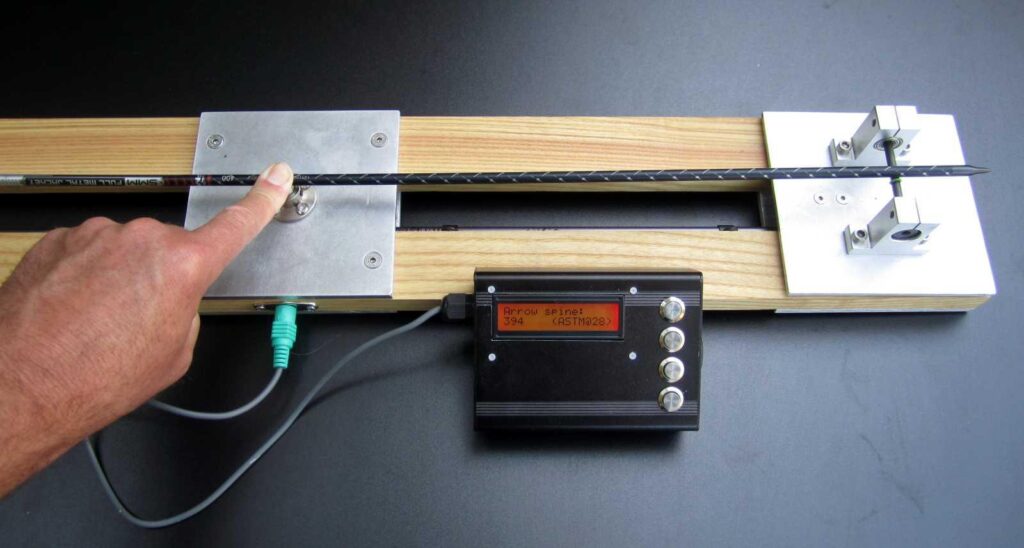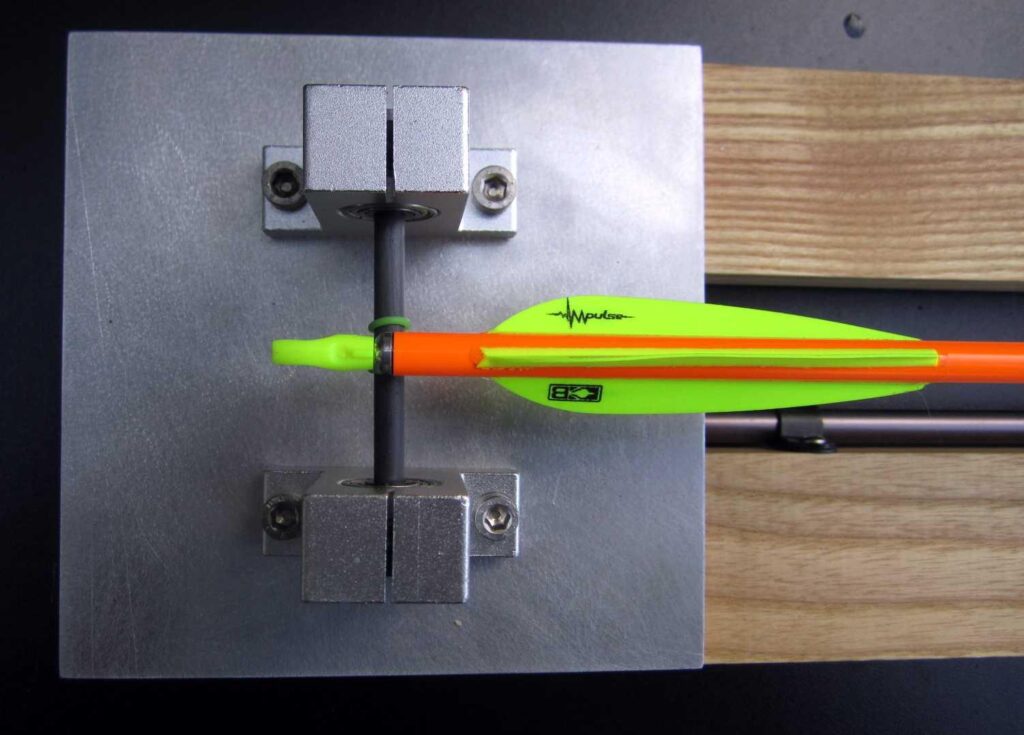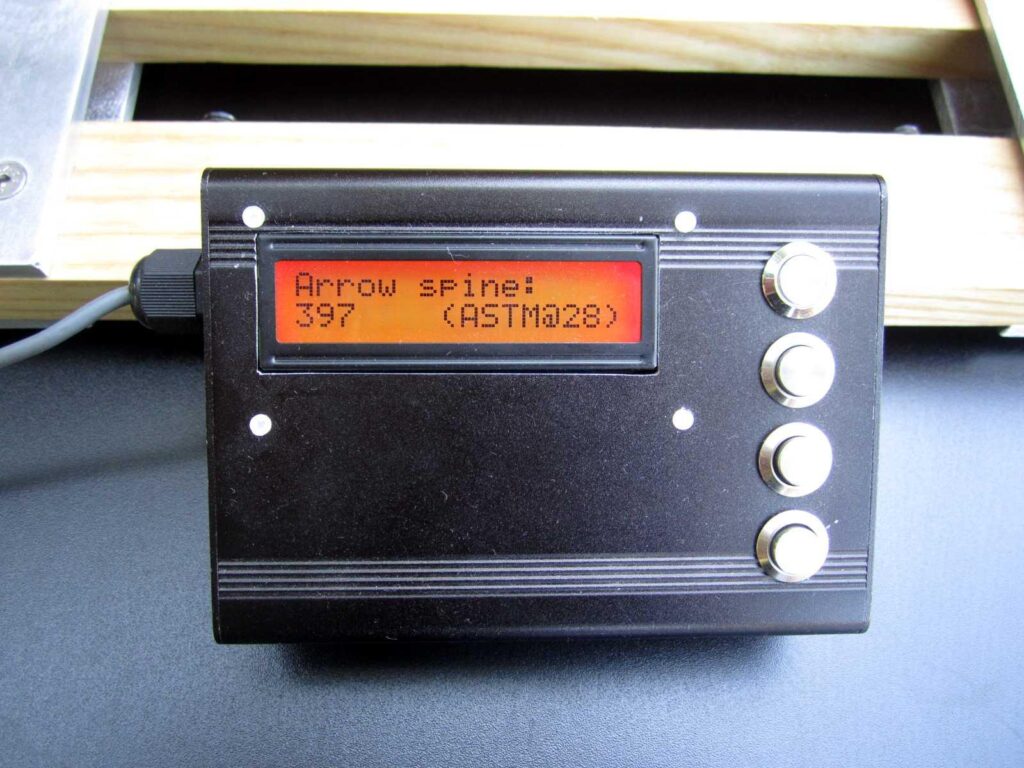
Repeatability requires consistency. This principle even applies to archery. If you want to hit the bullseye on every shot, you have to draw the string with consistent force, keep your stance consistent, and so on. You also want your arrows to be as consistent as possible. One major factor that goes into an arrow’s consistency is the stiffness of the shaft, called the spine rating. This electronic tester makes it easy to measure that.
The simplest and most common way to determine an arrow’s spine rating is to place the arrow on two supports — one near the head and one near the fletching. You then hang a weight from the middle of the shaft and measure how much it bends. More sophisticated mechanical testers include a dial, similar to what you’d see on a torque wrench. This electronic tester follows the same principles, but provides digital precision.

This tester has three load cells. Two are underneath the supports that the arrows rest on. The third is below the center of the shaft. An Arduino Nano board reads the output from the load cells via HX711 amplifier modules. The archer pushes down on the shaft, which pushes onto the middle load cell. Between the three load cells, the Arduino then knows the total force applied to the arrow and the force from the deflected portion of the shaft. A few calculations later and the Arduino outputs the spine rating on a small LCD screen.

It’s a quick and easy way to make sure every arrow in the quiver has the same spine rating, ensuring consistency and repeatability.
The post This electronic arrow spine tester measures arrow consistency appeared first on Arduino Blog.
No comments:
Post a Comment